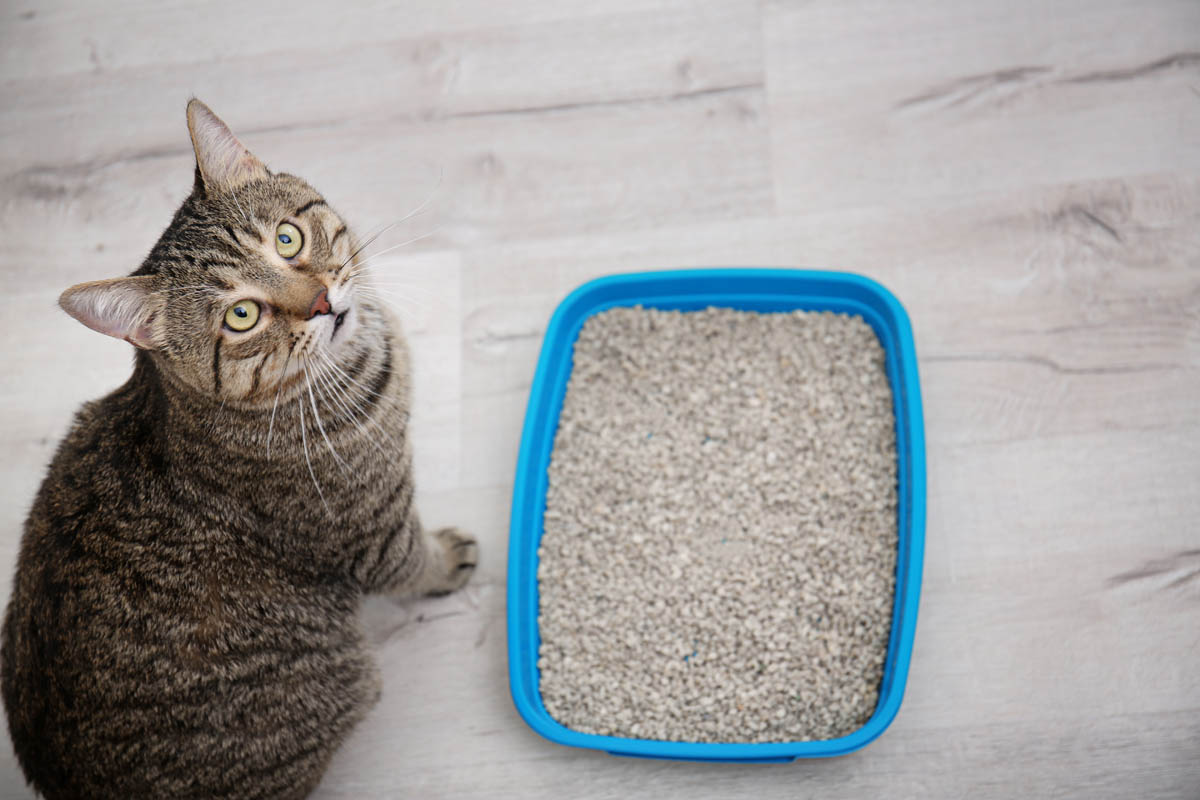Litter tray refusal in cats is a common source of frustration among cat carers and a large number of cats end up in shelters due to inappropriate toileting.
Always see a veterinarian to rule out a medical cause. Once that is ruled out you must look at possible behavioural causes. Below I will outline some possible behavioural and medical reasons why cats will refuse to use their litter tray.
Behavioural causes of litter tray refusal
Dirty litter trays
Cats are fastidiously clean and may refuse to use a tray that is not clean. As a rule of thumb, you should have one litter tray per cat, plus one spare. Although in multiple cat households this is not always possible. Regular scooping of your tray, along with changing the litter frequently should help.
Placement of the litter tray
Just as humans like privacy, so do cats. Placing the litter tray in a busy area may result in your cat’s refusal to use the litter tray. If your cat has to walk up two flights of stairs to get to his toilet, or past the resident dog who ambushes him, he’s going to start looking for alternate locations.
Cats do not like to go to the toilet near where they eat. So make sure the litter box is placed far from your cat’s food and water.
Doesn’t like the brand/type of litter in the tray
Cats can be quite choosy when it comes to cat litter. If you plan to change the type of litter do so over a few days by gradually increasing the new type of litter while decreasing the old type. Avoid cat litter with strong scents.
Inappropriate choice of litter traySome cats like enclosed litter trays for privacy, others prefer open trays so that they can see their surroundings.
Stress
A major cause of inappropriate urination in cats. Factors causing stress in cats can be moving house, the introduction of a new family member (pet or human), a neighbour’s cat roaming your garden etc. Helping your cat overcome these stresses may well result in inappropriate urination stopping, however, this isn’t always the case. Sometimes the behaviour can become so ingrained in the cat that even once the stress has been removed, the behaviour continues. If this is the case it is a good idea to seek advice from your veterinarian as to how to re-train your cat. Some cat owners have had great success using Rescue Remedy on their cats, although this isn’t advisable until you have spoken to your vet.
Medical causes of litter tray refusal
Urolithiasis
Uroliths are rock-like stones found in the urinary tract causing irritation and secondary infection. Struvite (also referred to as magnesium ammonium phosphate or MAP) account for approximately 65% of stones, 20% are calcium oxalate [1], other stones include calcium phosphate, ammonium urate, silica, and cystine. The stones are named after their mineral formation and are caused by varying reasons. Your veterinarian must identify which stone(s) your cat has and treats it accordingly.
Cystitis
Inflammation of the bladder. It may precede or be secondary to urolithiasis (stones). Other possible causes include; idiopathic (no known cause), bacterial infection.
Megacolon
A condition in which the colon becomes abnormally dilated and enlarged and loses its ability to contract. It is associated with constipation or obstipation. There are two forms of megacolon; congenital (present at birth) or acquired. The most common form of acquired megacolon is idiopathic (cause unknown) although it is believed to be improper activation of smooth muscle within the colon and rectum. [1] Other causes, dietary (ingesting non-digestible objects which become impacted, injury (ie; pelvic fracture), refusal to defecate because of a dirty litter tray which results in fecal matter building up and distending the colon, anal sac impaction which also leads to a refusal to defecate, tumours and neurological disorders.
Arthritis
As cats age, many can develop arthritis, which is a painful condition characterised by pain in the joints. Cat owners should make adaptations to cats to make their lives easier, which may include providing cats with a suitable litter tray that is easy to access and doesn’t have high sides.
Declawing pain
This procedure can sometimes lead to refusal to use a litter box as often the cat’s paws are tender and scratching around in cat litter can hurt, in this case, it is advisable to find a softer litter that is less harsh on your cat’s feet.
How many litter trays do I need?
As a guide, you should have one litter tray per cat, plus one extra. So if you have two cats, you should have three litter trays. If you live in a multi-story house, there should be a litter tray on each level.

